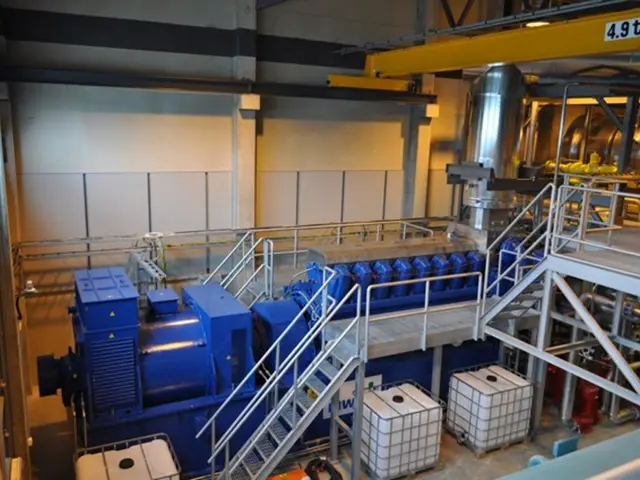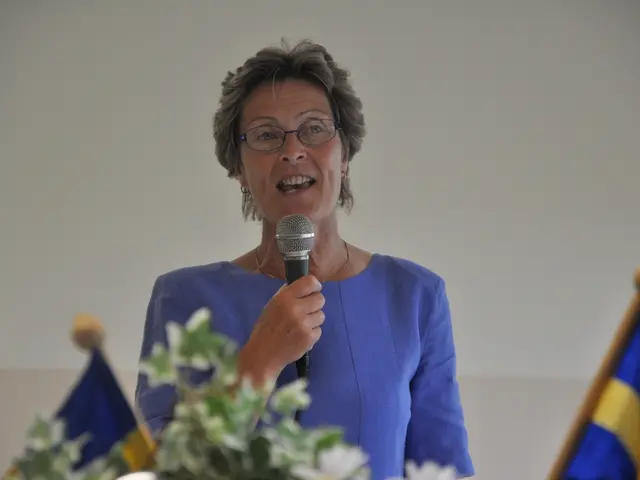Uncovering the Obstacles in Inclusive Learning: A Teachers' Perspective
Barriers to Inclusion: Insight from Educators' Perspective: Survey Findings - Barrier Analysis Shows Widespread Challenges in Achieving Inclusion Among Educators
In the world of contemporary education, a shared classroom for children with and without disabilities may not be the go-to choice for everyone. A survey commissioned by the Association of Education and Education (VBE) paints a vivid picture, with only 18% of teachers in NRW considering a common classroom practical for children with disabilities. Conversely, around 32% of teachers favor special schools for children with disabilities.
The survey, conducted amongst 520 teachers in North Rhine-Westphalia this spring, unveiled a multitude of apprehensions and barriers to successful inclusion in regular schools. Teachers yearn for more special pedagogical expertise and corresponding qualifications, smaller class sizes, and more resources to cater to the increased learning needs of students with disabilities.
Many teachers shared their concerns about the lack of specialist staff, inadequate training, and insufficient workshops, which exacerbates the struggle to establish a supportive and conducive learning environment. The absence of sufficient support staff often hampers the ability to allot adequate time for social interaction, denting the chances of achieving the desired social learning objectives.
On average, 21 students attend inclusive classes in NRW, inclusive of 4.5 children with special educational needs. The union contends that this is less favorable compared to the national average. The dream for double staffing in inclusive classes - a team consisting of a teacher and a special educator - is shared by 97% of respondents; however, the reality paints a different picture, as merely 2% of teachers in NRW work in such double staffing scenarios. Membership to a multi-professional team, modern diagnostics, and appropriate learning materials are other demands from teachers to foster a more inclusive and supportive educational environment.
Many teachers feel isolated, grappling with the challenging task of inclusion. According to the education union VBE, approximately 85% of teachers surveyed were unhappy with the current inclusion policy of the state. The union advocates for greater double staffing, multi-professional teams, modern diagnostics, and appropriate learning materials to enhance the situation.
Minister of Education, Dorothee Feller (CDU), emphasizes inclusion as an essential educational goal for the state government. The government is investing massively in this area, with plans to appoint numerous additional teaching and social pedagogical staff, and provide high inclusion subsidies to municipalities.
However, opposition parties like the SPD argue that improvements are slow and incremental. According to the SPD faction, children with physical, mental, or emotional challenges should always be welcomed in schools, and the government should expedite the implementation of its announced action plan.
Children and young people with disabilities have had the right to inclusive education in Germany since 2009, in accordance with the UN Convention on the Rights of Persons with Disabilities, aiming for equal participation and preventing exclusion. The ultimate objective is to equip students with disabilities with more opportunities and support, while enriching their non-disabled peers with increased social learning, tolerance, and empathy.
Enrichment Insights:
- Skills and Resources: Effective inclusive education requires teachers to possess specialized skills and resources like targeted teaching methods, assistive technology, and specialized instructional materials[1].
- Policy Changes: A comprehensive approach to inclusive learning should also encompass policy changes like the elimination of remedial classes and the provision of additional support to students from disadvantaged backgrounds[2].
- Digital Integration: The adoption of digital learning tools can strengthen equity in education and cater to the diverse needs of students with disabilities. However, challenges persist due to limited infrastructure, varying access to technology, and concerns regarding data privacy[2].
- Inclusive Environments: Making learning environments physically accessible for all, including barrier-free playgrounds, is a critical component of inclusivity[5].
- Community Engagement: Encouraging community and family involvement is essential to foster an inclusive and supportive education ecosystem. This can be achieved through awareness campaigns, workshops, and feedback mechanisms[4].
Teachers in North Rhine-Westphalia advocate for more vocational training in special pedagogical expertise, smaller class sizes, and adequate resources to cater to the learning needs of students with disabilities in the quest for a more supportive and inclusive learning environment (education-and-self-development, personal-growth, learning). The Association of Education and Education (VBE) reported that 97% of teachers surveyed desire double staffing, which would consist of a teacher and a special educator in the classroom, but only 2% currently work in such a setup (community policy). The education union VBE also requests membership to a multi-professional team, modern diagnostics, and appropriate learning materials to foster a more inclusive and supportive educational environment (education-and-self-development, personal-growth, learning).








